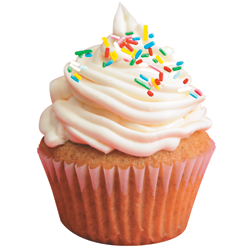These eight examples of effective Quick Response (QR) codes capitalize on a weapon already
in attendees' pockets or purses – their smartphones – to satiate their appetite for instant
gratification. By Claire Walling
 ccording to a recent United Nations study, 6 billion of the estimated 7 billion people on earth have access to a mobile device. That figure is steadily growing, and the mobile trend has cultivated a generation of consumers that crave immediate gratification – and marketers are finding that Quick Response (QR) codes offer just that.
The square, 2-D barcodes aren't a newcomer to the trade show floor, but haphazardly slapping them onto exhibit graphics and marketing collateral is just wasting ink. "A lot of people use QR codes in ways that are not well thought out," says Tim Patterson, founder and owner of Salem, OR-based Communication One Exhibits LLP.
Both Patterson and Kristin Veach, senior vice president of marketing and business development at Live Marketing Inc., agree that there are two rules for the effective use of QR codes: 1) Codes must serve a specific purpose that is well communicated, and 2) the QR code's landing page must be optimized for smartphones.
So what does the future hold for these 2-D tools? Veach forecasts a shift from QR codes being used for "flat collateral," such as a PDF of a product spec sheet, to more dimensional content, such as augmented-reality experiences and videos. "QR codes will become more dynamic and more interactive. They'll be used to create more compelling experiences, especially at shows and events," she says.
If you're tempted to incorporate QR codes into your booth, here are eight examples that inspired our writers to start scanning.
Trading Cards
Printing QR codes on business cards is hardly a new idea, but often the card's design takes a back seat to the information-bearing codes. Fusion Imaging Inc.'s die-cut cards, however, took code-laden cards to a whole new level at EXHIBITOR2012. First, the cards featured an innovative 3-D design that immediately made them stand out among a stack of competitors' cards. Second, the brightly colored cards matched the hue of the company's exhibit on the trade show floor, creating a memory aid to help attendees connect the cards with the exhibit – and their experience inside it – after the show. Finally, each Fusion employee received his or her own unique QR code, making it easy to identify where users encountered the code. Once scanned, the code linked to Fusion's website.
|
 |
 Scavenger Scan
Scavenger Scan
To generate buzz and encourage attendees to download its free app onto their smartphones, barcode-scanning technology provider RedLaser, a division of eBay Inc., developed a treasure hunt of sorts at the International Consumer Electronics Show. But rather than attendees hunting for gold, RedLaser sent them in search of QR codes. Signage throughout the Las Vegas Convention
Center, on coffee sleeves, and on T-shirts worn by food-service staff at restaurants inside the venue directed attendees to download the free barcode-scanning app and visit the company's booth to begin the RedLaser SCANenger hunt. Once inside the booth, attendees scanned a QR code printed on aisle-side signage, which informed them that if they followed the clues leading them to each of four more QR codes hidden in and around the convention center, they would be entered into a drawing for an Apple MacBook Air. Scanning the in-booth code prompted participants to register by providing their name, phone number, and email address. After registering, a clue appeared on participants' smartphones, directing them to the second QR code, and so on. Each clue referenced a product feature or RedLaser partner, further educating participants on the app. Hundreds of participants spent between 30 and 60 minutes hunting down all five codes. And because participants had to register, RedLaser was able to follow up with them after the show to offer additional company info.
|
Follow Me
All the tweets and status updates in the world won't do you much good if nobody's actually reading them. So to alert attendees at the International Association of Amusement Parks and Attractions Expo of its social-media presence, Qubica AMF Worldwide positioned a simple banner stand in its exhibit that asked passersby, "Are you ready to follow us?" Sporting the company's logo, along with URLs to its Facebook and Twitter pages, the banner also featured two QR codes. When scanned by attendees' smartphones, the QR codes instantly launched windows with Qubica's Facebook or Twitter pages, and prompted participants to "like" or "follow" the company, respectively. The simple strategy netted dozens of new followers on both sites who now receive daily updates containing company news.
|
 |
 |
Demo on Demand
Windo Displays, a retail-communications firm, wanted to prove to attendees at EuroShop that it knows which cues can influence shoppers' behavior from the moment they enter the store to the time they leave the checkout. So the company placed a simple floor mat in the aisle just outside its booth space. The floor mat featured a QR code and the text "Scan Me." When attendees scanned the QR code, the following message appeared on their phones: "We just proved to you that floor advertising really works!" The message also directed attendees to visit the Windo Displays website for additional
product information and inspiration. Needless to say, attendees were floored by the effective demo/display hybrid.
|
Product Pages
Printing and shipping collateral literature is costly and time consuming. A portion of whatever you distribute at a show ends up in the trash, and the leftover literature is likely outdated by the time your next show rolls around. Those problems are compounded if your company features several different products, and if that product mix is regularly updated. Sega Arcade, a division of Sega Corp., sidestepped all those issues – and added a few new metrics to its dashboard – by simply printing the logos of the 16 arcade games it featured at the International Association of Amusement Parks and Attractions Expo on an easel-mounted sign in its booth. Each logo was positioned atop a unique QR code that, when scanned, took interested attendees directly to a product-specific page featuring product overviews, dimensions, shipping-related details, an information sheet, a user's manual, and a video trailer promoting the game. Plus, following the show, Sega was able to track the number of times each unique QR code was scanned, allowing it to quickly measure the interest level in each individual product.
|
 |
CODE COMPENDIUM
Still trying to crack the code to successfully incorporate Quick Response (QR) code technology into your exhibit? Here are six tips for mastering the art of mobile marketing.
Color Coded
Contrary to popular opinion, QR codes don't have to be black on white. According to Evan Detskas, exhibit design manager at Skyline Exhibits, contrast, not color, is key. Instead of having a black and white code blemish a jewel-toned back wall, any color can be used, as long as the contrast between the QR code and its background is sufficient.
Bigger is Better
QRStuff, a QR-code-generation company, advises that printed codes shouldn't be smaller than 1 square inch. But a good rule of thumb is to maintain a 1-to-10 ratio between QR-code size and the optimum distance to scan it. So a code on the back wall of a 10-by-10-foot exhibit should be at least 1 foot wide if you anticipate attendees will be scanning it from the aisle.
Pixel Power
Using a URL-shortening service such as bit.ly or goo.gl reduces the pixel density in a QR code, making it easier to scan. Printing your code on a flat surface and at eye level also helps enhance its scanability.
Show and Tell
Most people are used to seeing QR codes, but not everyone has a code-scanner app on their phone. Kristin Veach, senior vice president of marketing and business development at Live Marketing Inc., recommends pairing codes with signage that explains where they lead and how to scan them. It also helps to have a staffer to facilitate the process.
Service Call
Cellphone coverage is everywhere these days unless you're in some metal and cement convention centers, says Tim Patterson of Communication One Exhibits LLP. If you're wary about the cell service at your next trade show, consider ordering in-booth Wi-Fi or, if that isn't an option, printing QR codes on fliers or business cards that attendees can scan when they're off the show floor.
Check, One, Two
This is one occasion where you should encourage staffers to use their smartphones on the trade show floor. Just because your QR code worked in the office doesn't mean that it will work on your finished, installed exhibit graphics. Patterson and Veach agree that testing the code using a variety of smartphones (iPhone and Android) and code-reader apps is critical.
Kodak Code
Sometimes you want to communicate more information to attendees than is possible with exhibit signage. At the International Consumer Electronics Show, Eastman Kodak Co. displayed nine different
QR codes that could be scanned to access everything from additional product information to the schedule of presentations inside the exhibit's K-Zone theater. But to educate QR virgins and ensure interested attendees didn't miss any of the company's nine in-booth codes, Kodak posted signs throughout its space with instructions on how to download and use NeoReader, an app that scans QR codes, alongside a floor plan of the Kodak exhibit with callouts detailing the exact location of all nine codes.

Code Couture
For most exhibit managers, staff attire is little more than a pain in the butt. It's nearly impossible to satisfy all staffers' preferences and body types, and whatever booth uniforms you ultimately select often create more drama than they're worth. Poor Richards Promos Inc. turned its booth uniforms into buzz-worthy, brand-building implements at EXHIBITOR Show. Each staffer donned a T-shirt or jacket with a QR code printed on the back, beneath the tagline "Stop looking at my apps." When attendees scanned the codes, they were led to a page on the company's website featuring info on QR codes, including how and why attendees might use them. The coded couture drove more than 100 curious prospects to the Poor Richards Promos website, where they spent an average of four minutes learning more about QR code technology and the various promotional items that can be printed with the 2-D barcodes. When's the last time your booth uniform did that?
 |
 |
Paperless Press Kit
In today's world of e-lit and online press rooms, who needs a hard-copy kit anymore? Vin de Garde Cellar Systems Inc. bypassed boring old manila folders and press releases at the International Contemporary Furniture Fair in New York, by positioning a roughly 2-by-2-foot-square sign unobtrusively on the lower right-hand corner of a side wall in its exhibit. The sign featured a large QR code and the word "media" printed beneath it. When scanned, the code took writers and editors interested in more information to Vin de Garde's online press site. With a single scan using any smartphone loaded with a QR-code reader, press representatives could access product photos, a bio of the Vin de Garde's owner, and various links to additional company and product information – without having to lug home a hard-copy press kit or product catalogue.
|
|




 ccording to a recent United Nations study, 6 billion of the estimated 7 billion people on earth have access to a mobile device. That figure is steadily growing, and the mobile trend has cultivated a generation of consumers that crave immediate gratification – and marketers are finding that Quick Response (QR) codes offer just that.
ccording to a recent United Nations study, 6 billion of the estimated 7 billion people on earth have access to a mobile device. That figure is steadily growing, and the mobile trend has cultivated a generation of consumers that crave immediate gratification – and marketers are finding that Quick Response (QR) codes offer just that. 










